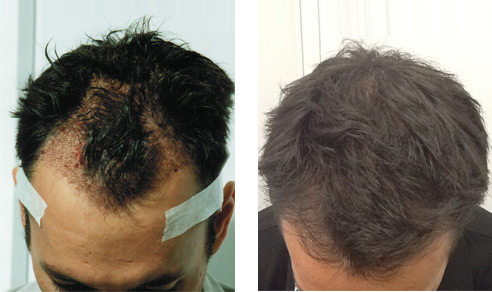The Answers to Key FUE Hair Transplant Questions
Jan 13, 2019 03:51

If you’re looking for more information on hair transplants before you schedule your procedure, you’re taking the right approach.
The internet is full of useful information but at the same time, it is also filled with false information, which can lead to confusion.
This article aims to answer some of the most commonly asked questions about FUE hair transplants and clear up any confusion.
FUE Hair Transplant Q&A
Is an FUE hair transplant my best option?
Hair restoration is a personal process and the method you decide on should be based on your personal preferences. Unlike follicular unit transplantation (FUT), follicular unit extraction takes less time to heal and the results tend to look more natural too. Since patients are only left with small puncture wounds, there is no post-surgical pain.
Is FUE an option for me if I’m bald?
While there have been many advancements in the field of hair transplantation, not much can be done if you don’t have any donor hair to work with. The more donor hair a patient has, the greater the chances of their surgery being a success. Unfortunately, patients with little to no hair are not ideal candidates for this procedure but treatments such as PRP therapy could be an option.
How long will my FUE hair transplant results last?
The FUE method actually provides the most permanent results. During your procedure at top medical facility such as Martinick Hair transplant clinic in Sydney, individual hair follicles will be removed from the areas of your scalp that have greater volumes of hair – which is usually the back or side of the head. Once extracted, the hair follicles are transplanted where the hair is thinning and will continue to grow as normal.
What is the FUE hair transplant recovery process like?
The good news is that the recovery process is pain-free and much faster than other methods that are more invasive. Caring for your scalp and hair after your procedure isn’t complex either. Following your hair transplant, your surgeon will provide you with a specific set of aftercare instructions that you should follow as closely as you can.
It is recommended that patients take at least a week off of work. This can sometimes extend to two weeks if the procedure was more complex. You will also need to take a course of antibiotics to protect yourself against any infections and use specific haircare products that will enhance your results.
After your procedure, it’s best not to go to the gym for the first week and to avoid swimming for at least 2 weeks – this includes staying out of direct sunlight. To ensure a smooth recovery, it’s better to avoid alcohol during the first week. If you would like to use your recovery period as an opportunity to take a holiday, this is a great idea, provided you stay out of the sun. You can expect to see the full results of your surgery 6 – 12 months after your procedure.







































































